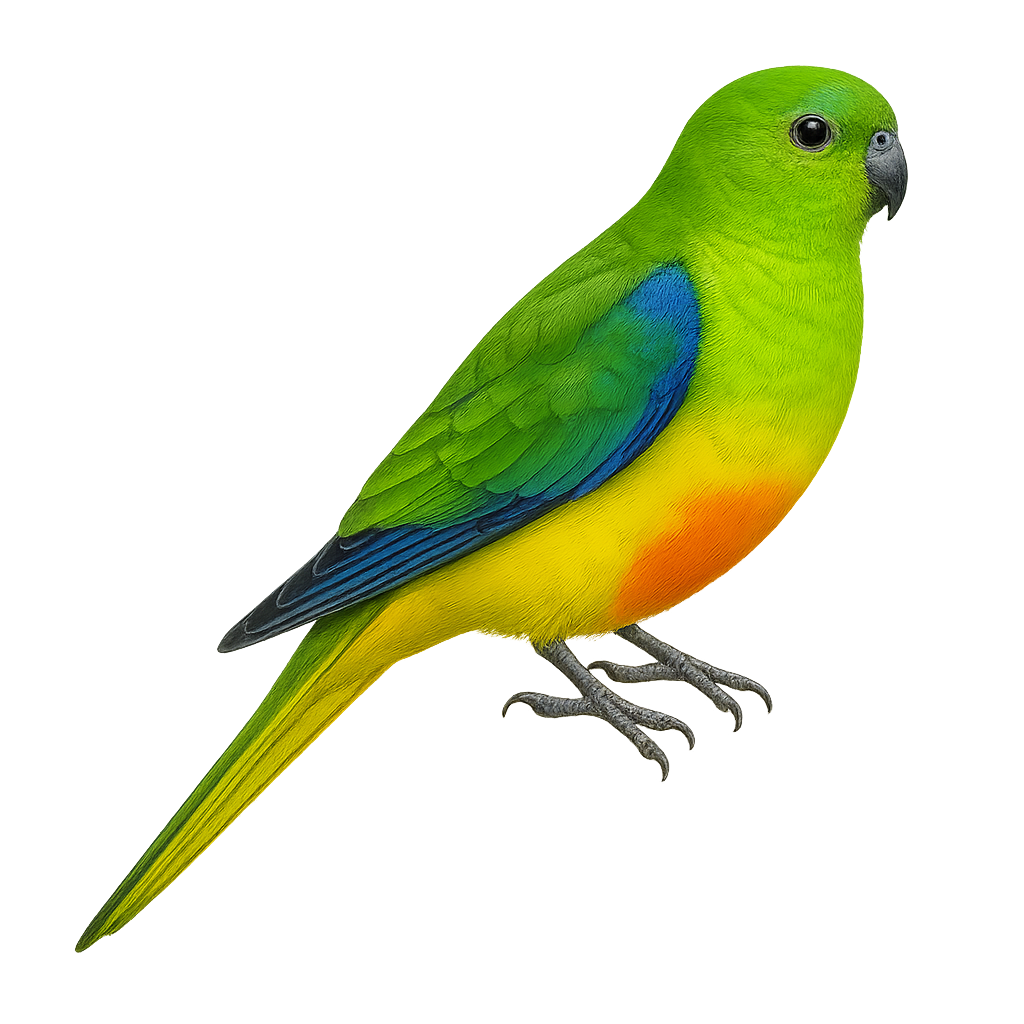Your wildlife photography guide.
Explore the orange-bellied parrot in detail, study its behavior, prepare your shots.
Where to observe and photograph the orange-bellied parrot in the wild
Learn where and when to spot the orange-bellied parrot in the wild, how to identify the species based on distinctive features, and what natural environments it inhabits. The WildlifePhotographer app offers tailored photography tips that reflect the orange-bellied parrot’s behavior, helping you capture better wildlife images. Explore the full species profile for key information including description, habitat, active periods, and approach techniques.
Orange-bellied Parrot
Scientific name: Neophema chrysogaster

IUCN Status: Critically Endangered
Family: PSITTACIDAE
Group: Birds
Sensitivity to human approach: Suspicious
Minimum approach distance: 10 m
Courtship display: October to November
Incubation: 21-23 jours
Hatchings: October to December
Habitat:
Coastal areas, grasslands, salt marshes
Activity period :
Primarily active during the day, with peak activity in the morning and late afternoon.
Identification and description:
The Orange-bellied Parrot is a small parrot endemic to Australia, known for its vibrant plumage and distinct orange belly. Measuring about 20 cm in length, it features a bright green back, orange belly, and blue markings on the wings and head. This migratory species breeds in southwest Tasmania and migrates to the southeast coast of mainland Australia in winter. It primarily feeds on seeds of grasses and coastal plants. Unfortunately, it is critically endangered, with fewer than 50 wild individuals remaining. Conservation efforts include captive breeding programs and protection of its natural habitat.
Recommended lens:
400 mm – adjust based on distance, desired framing (portrait or habitat), and approach conditions.
Photography tips:
To photograph the Orange-bellied Parrot, it's essential to use a telephoto lens of at least 400mm to capture detailed images without disturbing the bird. Look for coastal areas or grasslands where these parrots feed. Be patient and discreet, as they are suspicious. Early morning or late afternoon provides the best natural light. Use a tripod to stabilize your camera and adjust your shutter speed to capture quick movements.
The WildlifePhotographer App is coming soon!
Be the first to explore the best nature spots, track rutting seasons, log your observations, and observe more wildlife.
Already 1 431 wildlife lovers subscribed worldwide

